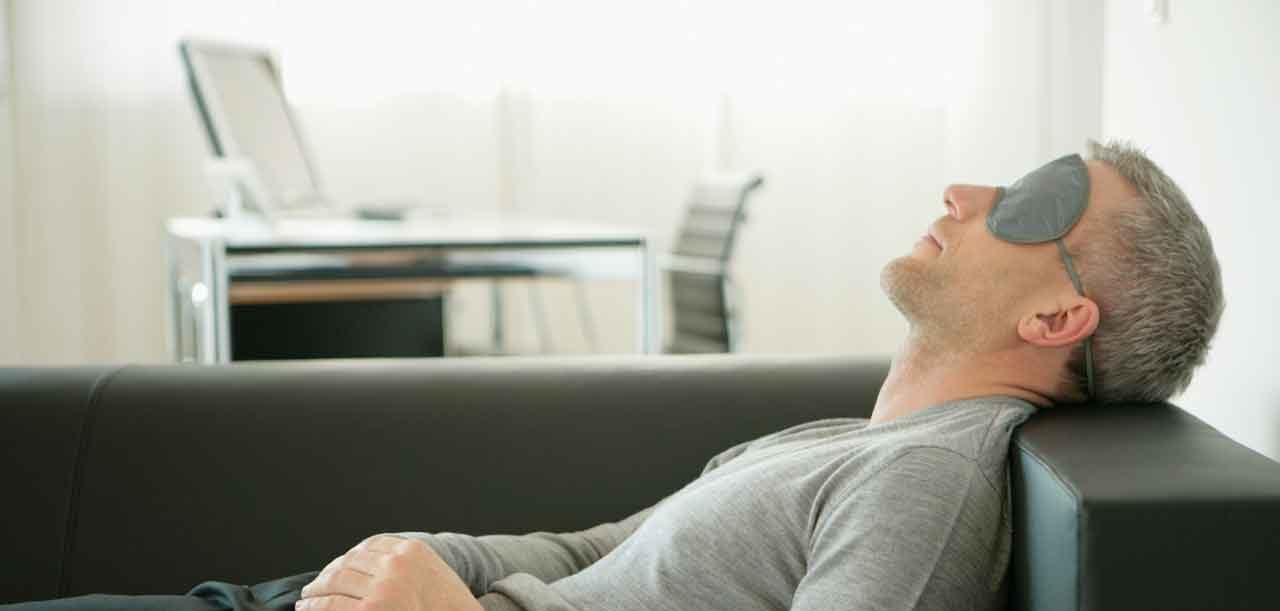The Science Behind Taking a Perfect Nap

Napping is a natural biological function that can improve memory, motor skills, and even heart health.
Are you sleeping enough?
Most people aren’t, according to a study by the National Sleep Foundation. The average adult needs 7 to 9 hours of sleep per night. Regularly getting less can causes fatigue, poor health, trouble concentrating, and lapses in memory.
When you don’t get enough sleep, the urge to nap is part of how your body compensates. In 1989, one of the first sleep studies to focus exclusively on napping found that strategic napping is a normal way to remedy a sleep deficit. But researchers also found that even with enough night sleep, the human body is primed to fall asleep for a short while about twelve hours after the middle of your main sleeping time.
That means that if you generally sleep from 11:00 p.m. to 6:00 a.m., you’ll find yourself wanting a nap around 2:30 in the afternoon.
YOU MIGHT ALSO LIKE: Extra Weight and Depression Can Cause Daytime Sleepiness
Benefits of napping
There’s a reason your body wants to nap in the afternoon. Studies have found that habitual napping improves your memory, reaction time, and motor skills.
Other research into specific professions found that regularly scheduled naps lead to better performance by nurses and doctors, as well as more alertness and improved response times by pilots and other aviation operators.
There are even documented health benefits to napping. A Harvard study published in 2007 found that working men who regularly nap — for at least half an hour, at least three times a week — were less likely to suffer from coronary heart disease.
Once researchers discovered that napping is a great way to catch up on sleep and improve physical and mental performance, they began looking at the specifics of where, when, and how long an ideal nap should be.
When to nap
Your best nap times depends on your personal schedule.
Research has found that afternoon naps are most likely to involve what is known as slow-wave sleep, which improves memory and alertness. If you have trouble concentrating in the afternoon, a post-lunch nap may help you focus during the rest of the work day.
If you are often awake at night because you work a night shift or have very young children, a mid-morning nap is going to benefit you the most. Napping in the morning is more likely to contain REM sleep (the type of sleep with dreams), which is calming and helps balance your emotions, as well as improving logical processing.
As a general rule, the best time to nap is related to your longest period of sleep. Napping more than 12 hours after the middle of your last long sleep can lead to sleep inertia, or confusion and mental fog after you wake up.
Luckily, even if you nap later than you meant to — say, you fall asleep when you get home from work — studies have shown that a short nap is unlikely to interfere with your nighttime sleep, even if you nap within two hours of your bedtime.
YOU MIGHT ALSO LIKE: Are Americans Getting Enough Sleep?
How long to nap
If you only have a short amount of time, a power nap of 10 to 20 minutes is ideal. A 2006 study found that for afternoon naps, 10 minutes of sleep produced the least amount of sleep inertia, while naps of 30 minutes or slightly longer led to grogginess and impaired mental functioning. Earlier research from 1999 found similar results, concluding that a 20 minute nap improves vigilance and work performance.
But if you did not get enough sleep the night before, try a longer nap of 60 to 90 minutes. This allows you to go through a full cycle of both slow-wave and REM sleep. Research published in Natural Neuroscience found this is the closest a nap can get to approximating a full night of sleep, though it is not a long-term substitute for regular, healthy sleep patterns.
If you don’t have a full 10 minutes, much less 90, then a brief nap is still worthwhile. A 2008 study published in the Journal of Sleep Research found that even six minutes spent napping can improve your memory performance when compared to staying awake for the same amount of time.
Where to nap
And the final component of taking the perfect nap — where to do it? Researchers have an answer for that, too.
A 2010 study found that napping in a bed leads to deeper sleep and greater post-nap alertness than napping in a chair. But the good news is that a chair nap is still better than no nap at all.
So even if all you have is six minutes in the afternoon at your desk, go ahead and take a quick snooze. You’ll feel, think, and work better afterwards.
Updated:
April 08, 2020
Reviewed By:
Janet O’Dell, RN